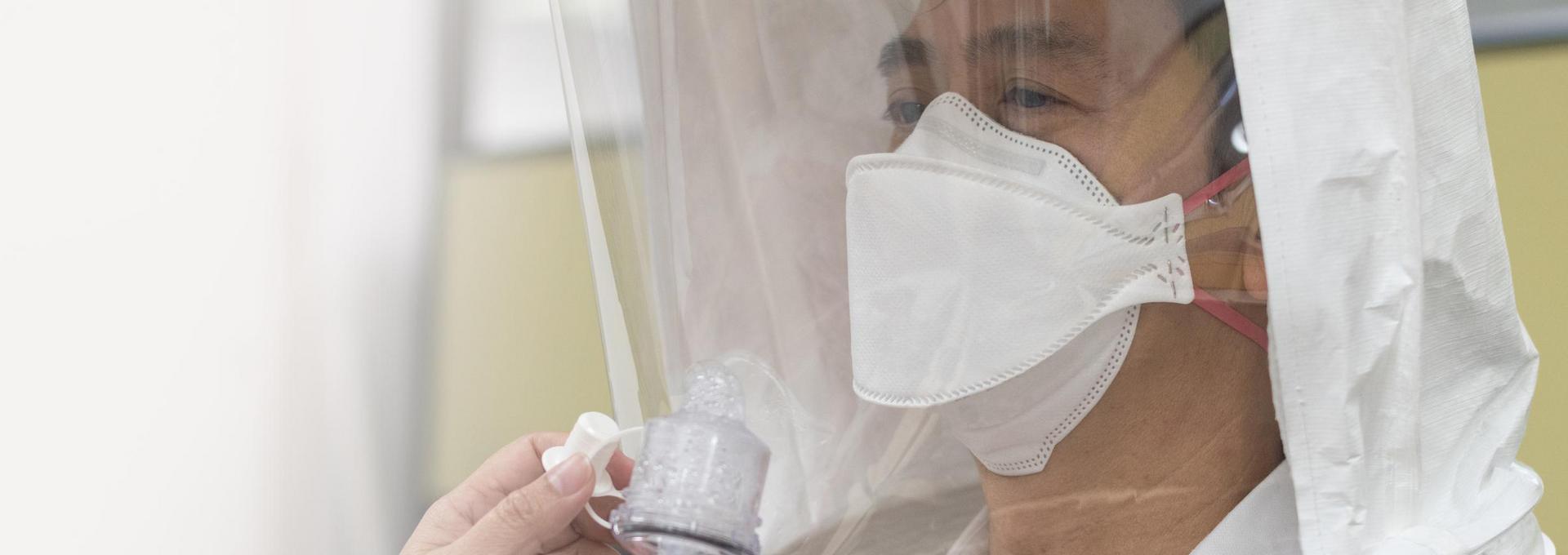
Respiratory Health Exams
Certain jobs require various respiratory health screenings, such as a respirator fit test, to protect workers from respiratory hazards and ensure they have the lung capacity to perform their job functions.
Workers in many different industries are being exposed to hazardous dust, chemicals, and other substances that can destroy their health and possibly even lead to death. As an employer, it's your responsibility to protect them. Keep reading to know which respiratory screening tests are required for your industry. It's a crucial step towards keeping your workers protected.
Types of Respiratory Health Exams
OSHA respiratory standards require screening for any general industry job that exposes workers to respiratory hazards. These hazards vary depending on the industry and include gases, vapors, dust, mists, fumes, smoke, sprays, fog, and airborne pathogens.
After exposure to some of these, workers may become ill immediately. Others can take years to make someone sick and can cause serious, life-threatening illnesses. Asbestos is just one example, possibly causing lung cancer several years after exposure.
As an employer, you are required to keep workers safe from these potentially deadly hazards and must meet federal OSHA or state OSHA respiratory protection standards. A key component of these standards is to provide employees with medical evaluations, including fit testing, and then providing appropriate respirators.
Prior to fit testing, it is required that all employees fill out OSHA's respiratory questionnaire to be used for their evaluations.
Respirator Fit Testing
A Respirator Fit Test is required for any general industry worker who may be exposed to the respiratory hazards mentioned and is quite common in healthcare, manufacturing, and construction.
Testing is essential to ensure the proper fit. It's also important to note that not all respirators protect against the same hazards. For example, respirators that protect from dust may not protect you from vapors, etc.
There are two different fit tests, Quantitative and Qualitative.
Qualitative Respirator Fit tests are used for a half-mask respirator (like the N-95) and use smoke or a smell to test for a good seal. They are generally less accurate than a quantitative test. This test does not measure the amount of air entering the mask and is a pass/fail test.
Quantitative Respirator Fit Tests are used to fit full-faced masks and count the number of particles coming into the respirator. This test can be used for any tight-fitting respirator but is mostly used for full-face respirators. The three OSHA-approved methods use generated aerosol, ambient aerosol, and controlled negative pressure.
Respirator fit tests are administered upon hire and then annually after that. It's also important to retest someone who had any changes to the face like weight changes, facial surgery, facial trauma or scarring, or dental work.
Employers are also required to educate workers on how to put on their respirators, wear them, and clean them properly.
Respiratory Health Testing Options
-
Chest X-Ray (1 View) $195
-
EKG $295
Additional Respiratory Screening
You may also decide on further testing upon hire to get a baseline assessment and be able to continually monitor the worker's health, especially workers who are at increased risk for exposure. Miners and firefighters fall into this category, and anyone else needing a self-contained breathing apparatus (SCBA).
These respiratory screening tests include pulmonary function and spirometry, chest x-rays, and electrocardiograms (EKG).
Pulmonary function testing (PFT) and spirometry are not required by OSHA but are additional tests to ensure the safety of the workers. PFTs are useful for physically demanding jobs, such as firefighters, and can detect poor respiratory health upon hire, as well as monitor lung function and detect changes to lungs before symptoms appear.
Pulmonary function testing is basically measuring how well you're breathing; from how well you inhale and exhale, to how effectively your lungs are exchanging oxygen and carbon dioxide.
Spirometry is part of pulmonary function testing and measures volume (amount) and flow (speed) of the air you breathe.
Chest X-rays may be required for anyone exposed to asbestos or hazardous waste, those that work in confined spaces, and when deemed medically necessary. They're also used to rule out tuberculosis (TB) after a positive TB skin test.
Chest x-rays, generally using front and/or lateral views, are used for diagnosing any existing lung conditions such as lung cancer, sarcoidosis, scarring of the lung tissue, tuberculosis, and COPD. Chest x-rays can monitor these conditions, and help with deciding treatment options to keep the condition from worsening.
Electrocardiogram (EKG) is a test that measures electrical impulses or waves through the heart. This is another test useful for those with physically demanding jobs.
EKGs are done by sticking electrodes to the chest to monitor the electrical activity. They can detect irregular heart rhythms, heart attacks, and heart failure.
Making sure employees are protected on the job with proper occupational health screening can prevent serious health conditions which may develop presently or years later. The best employers take their responsibility seriously to ensure proper respiratory health testing, well fitted protective equipment, and ongoing monitoring.